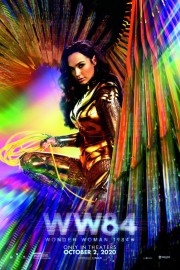Wonder Woman 1984
As uninspired as the superhero action is in “Wonder Woman 1984,” I think the place it gets to by the end is going to land pretty effortlessly with a lot of people. Patty Jenkins’s sequel to her 2017 blockbuster hit about Diana Prince is entertaining in a lot of ways, but also feels like it follows a lot of standard superhero movie tropes instead of leaning into the other ideas, or the era its set in, until the very end. That makes it a disappointment, but not an out-and-out disaster, and I’ll take that.
One of the hardest lessons we have to learn in life is that, chances are, life will not work out in all the ways we want it to, whether it’s the person we want to be with or the status we have with our peers or the power we accumulate in life, especially when the “why?” of why we want these things stand in opposition to everything else. This is ultimately what drives Diana (Gal Gadot), Barbara Minerva (Kristen Wiig) and Maxwell Lord (Pedro Pascal) to make the choices they do when an ancient artifact arrives at the Smithsonian Institute, where Diana works, and Barbara- an insecure woman who wants to befriend Diana, begins to work at.
“Wonder Woman 1984” begins with a flashback of young Diana at Themyscira as she competes against older competition in a multi-stage athletic competition. After she tries to take a shortcut, she is disqualified, and learns a lesson about truth. That scene feels perfunctory to have at least one scene at the Amazonian land in the movie, but truth plays an important lesson in the story ahead, and not just because we see Diana use the Lasso of Truth several times. Being true to who you is, ideally, a good thing, but if you aren’t particularly good, that can lead to a narcissism and thirst for power and loyalty that can be destructive to others around us. And if you aren’t comfortable with who you are? That’s where the grey areas get murky, and it can go one way or another. Needless to say, the truths of who Diana, Barbara and Maxwell Lord are give us the playing field of heroes and villains in the movie, including being able to resurrect Steve Trevor (Chris Pine), Diana’s pilot love, who died in the first one. It all comes back to that artifact, and what it brings out in each of the characters, and how they will all come together by the third act.
Try and Hans Zimmer’s score might, he can’t really make the action scenes in this movie that exciting to watch. Some of them- like an early one in a mall- are goofy and fun, but some of the big set pieces fall flat during this film; “Wonder Woman” was essentially a war movie, which I think worked to Jenkins’s advantage in that department- so much of “1984,” like the Cold War it is set in, revolves around political machinations, so the action feels more artificially staged. The film is much more successful during individual moments of drama and character-driven suspense, and it’s where the actors (especially Wiig and Barbara’s arc) all thrive. That helps in making the 151-minute running time move fairly quickly.
I said at the beginning of this review that I think the film will, ultimately, land fairly effortlessly for some audiences. That has entirely to do with the ending, where the main villain, a businessman who unlocks an ultimate power where he feeds on people’s desires, threatens to unleash WWIII if people do not do as he asks. The comparison to a certain, recently-defeated US President are kind of unmistakable, and it would be ridiculous if it weren’t for how much go-for-broke insanity Pascal brings to the role. The ending works, however, because he is able to be seen what his mistakes are, and because Diana has recognized her own mistakes, albeit through some very standard superhero narrative tropes, but in a way that works for the character, nonetheless. For that reason alone, it’s worth watching “Wonder Woman 1984,” even if it doesn’t quite reach the heights of the first film.










